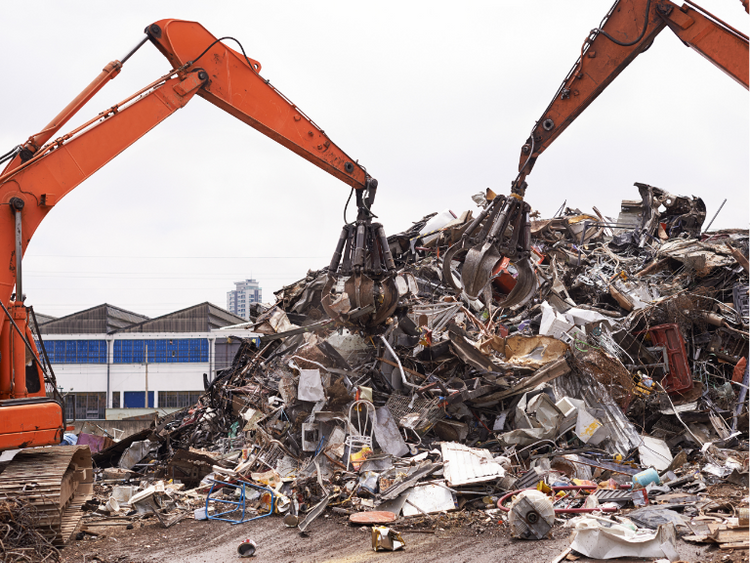Market Data

August 28, 2019
BEA: Regional GDP Growth Through Q1 2019
Written by Peter Wright
U.S. gross domestic product had positive growth in every region of the country in all four quarters of 2018 and in Q1 2019, according to Bureau of Economic Analysis data.
![]()
The BEA introduced a new data set for GDP by state and region in 2014 and backdated it to Q1 2005. This week, the data was updated through Q1 2019. Even though this might be considered historically “old,” we think it’s worth reporting because it’s the foundation for where we are now. The data is published quarterly and is reported in chained 2012 dollars seasonally adjusted. Steel Market Update analyzes the data and reports to subscribers quarterly by region. Table 1 shows the growth of regional GDP in chained 2012 dollars quarter on quarter. (These growth numbers are not annualized as opposed to the headline number for the growth of national GDP. Annualized means multiplied by four.) Every region has had positive growth in each of the last five quarters reported with the South West having the highest growth rate in Q4 2018 and Q1 2019.
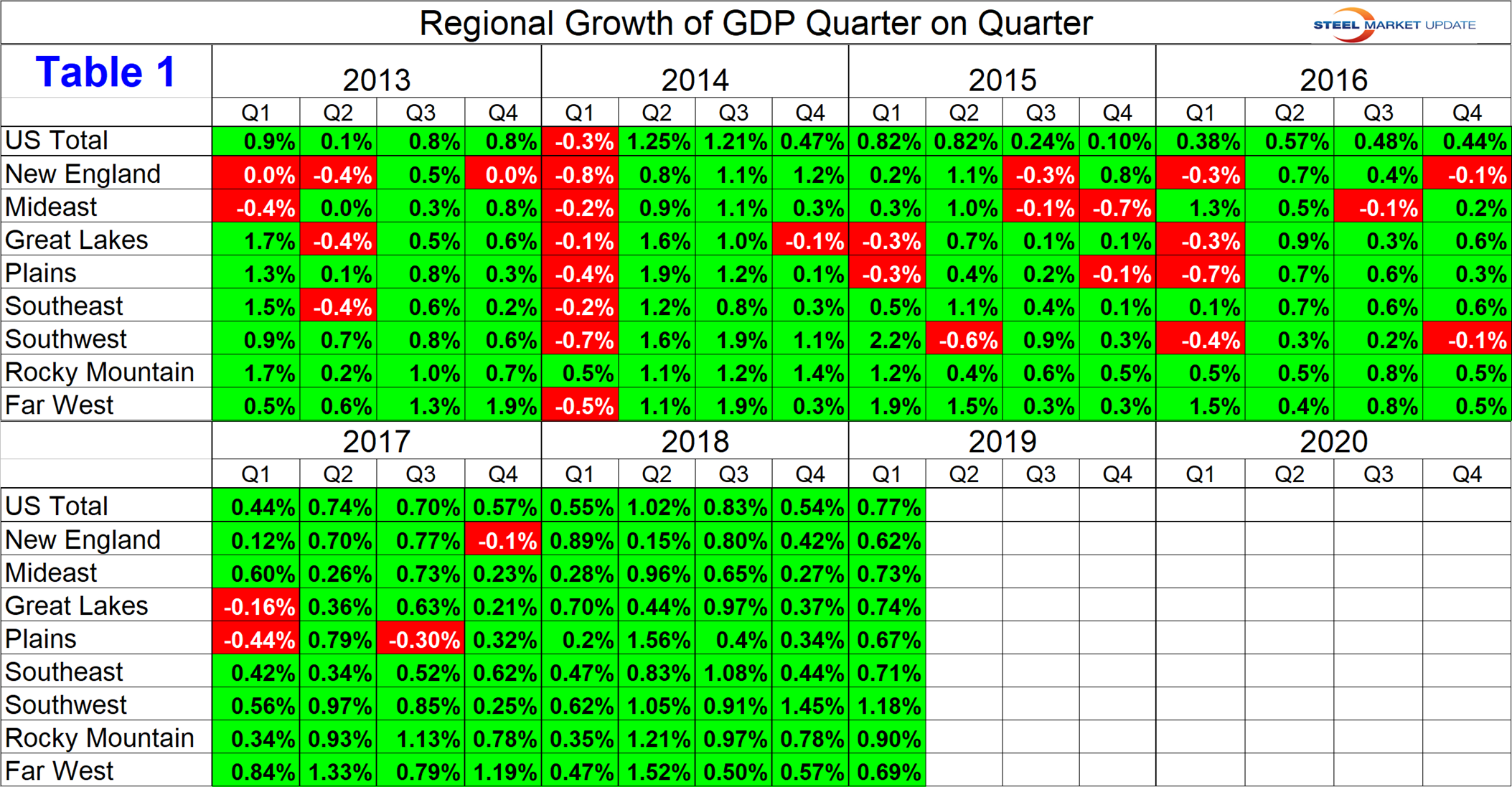
The BEA publishes a color-coded map of the United States showing annualized quarter-over-quarter growth of GDP by state within each region (Figure 1).
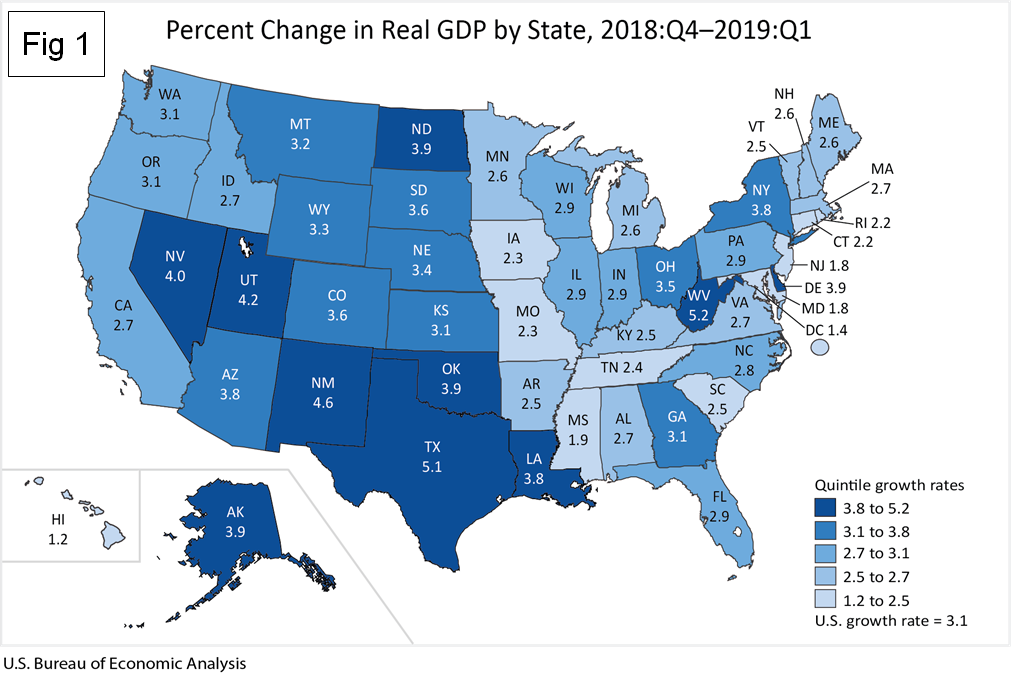
Regions as defined by the BEA are as follows:
New England: Connecticut, Maine, Massachusetts, New Hampshire, Rhode Island, Vermont.
Mid East: Delaware, DC, Maryland, New Jersey, New York, Pennsylvania.
Great Lakes: Illinois, Indiana, Michigan, Ohio, Wisconsin.
Plains: Iowa, Kansas, Minnesota, Missouri, Nebraska, North Dakota, South Dakota.
South East: Alabama, Arkansas, Florida, Georgia, Kentucky, Louisiana, Mississippi, North Carolina, South Carolina, Tennessee, Virginia, West Virginia.
South West: Arizona, New Mexico, Oklahoma, Texas.
Rocky Mountain: Colorado, Idaho, Montana, Utah, Wyoming.
Far West: Alaska, California, Hawaii, Nevada, Oregon, Washington.
Table 2 shows the GDP in millions of dollars annualized for the U.S. in total and for each of the eight regions as defined by the BEA. GDP is the value of the goods and services produced less the value of the goods and services consumed in each period. The South East region has the highest total GDP and the Rocky Mountains the lowest. This ranking is not qualitative; it is a function of how the BEA defines regions, which unfortunately does not correspond to how the Bureau of Labor Statistics defines regions for employment purposes.
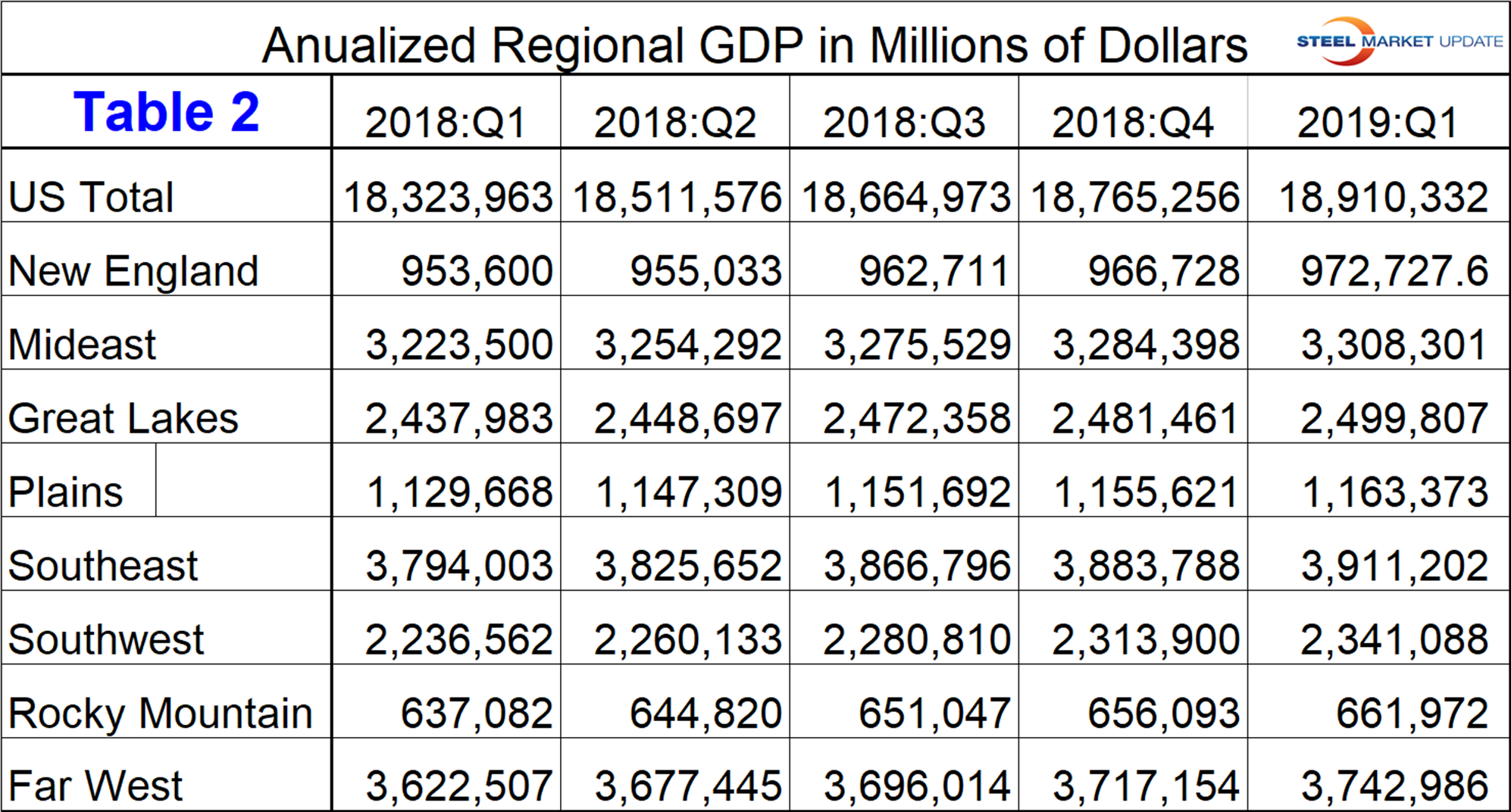
Figure 2 shows subscribers an example of the GDP graphs available on request for all regions and individual states. This example shows the results for the Great Lakes, which has an annual economic output of just less than $2.5 trillion.
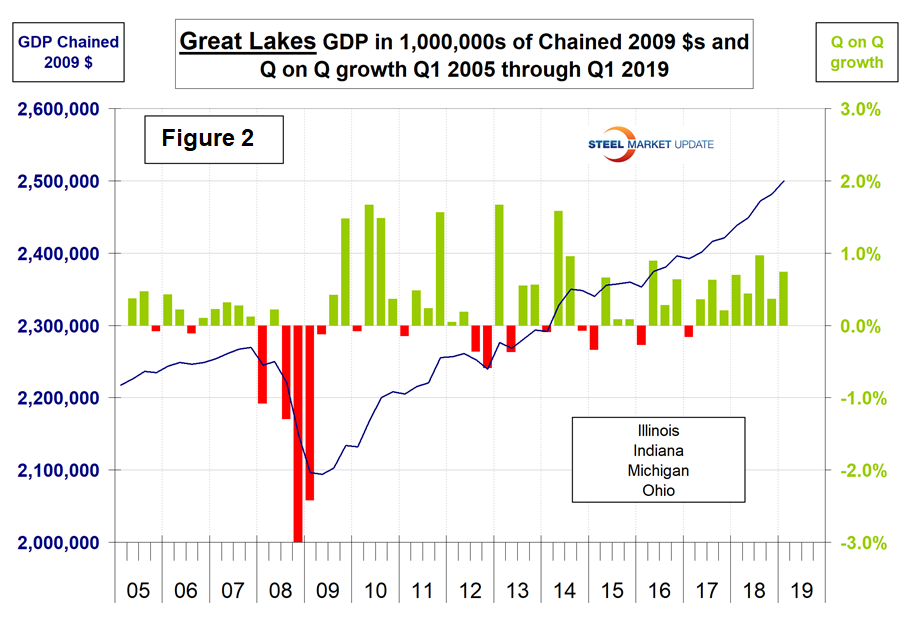
In addition to this report of regional GDP, we publish quarterly reports of regional job creation and regional imports. Our intention with these three reports is to help subscribers determine whether their business is subject to headwinds or tailwinds in the regions where they operate.
The U.S. total GDP values in this report are slightly higher than the sum of the regional totals because the GDP-by-state numbers exclude federal military and civilian activity located overseas (because it cannot be attributed to a particular state). In addition, the official headline quarterly report of national GDP is annualized, which increases the value by a factor of four.







